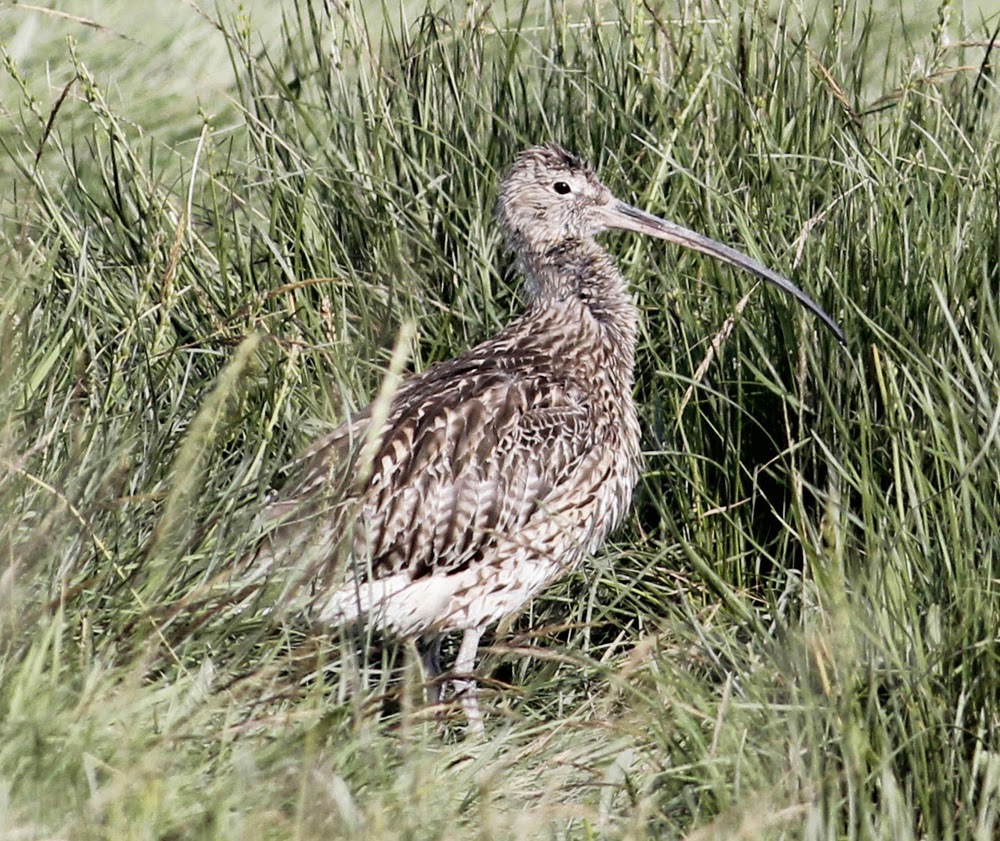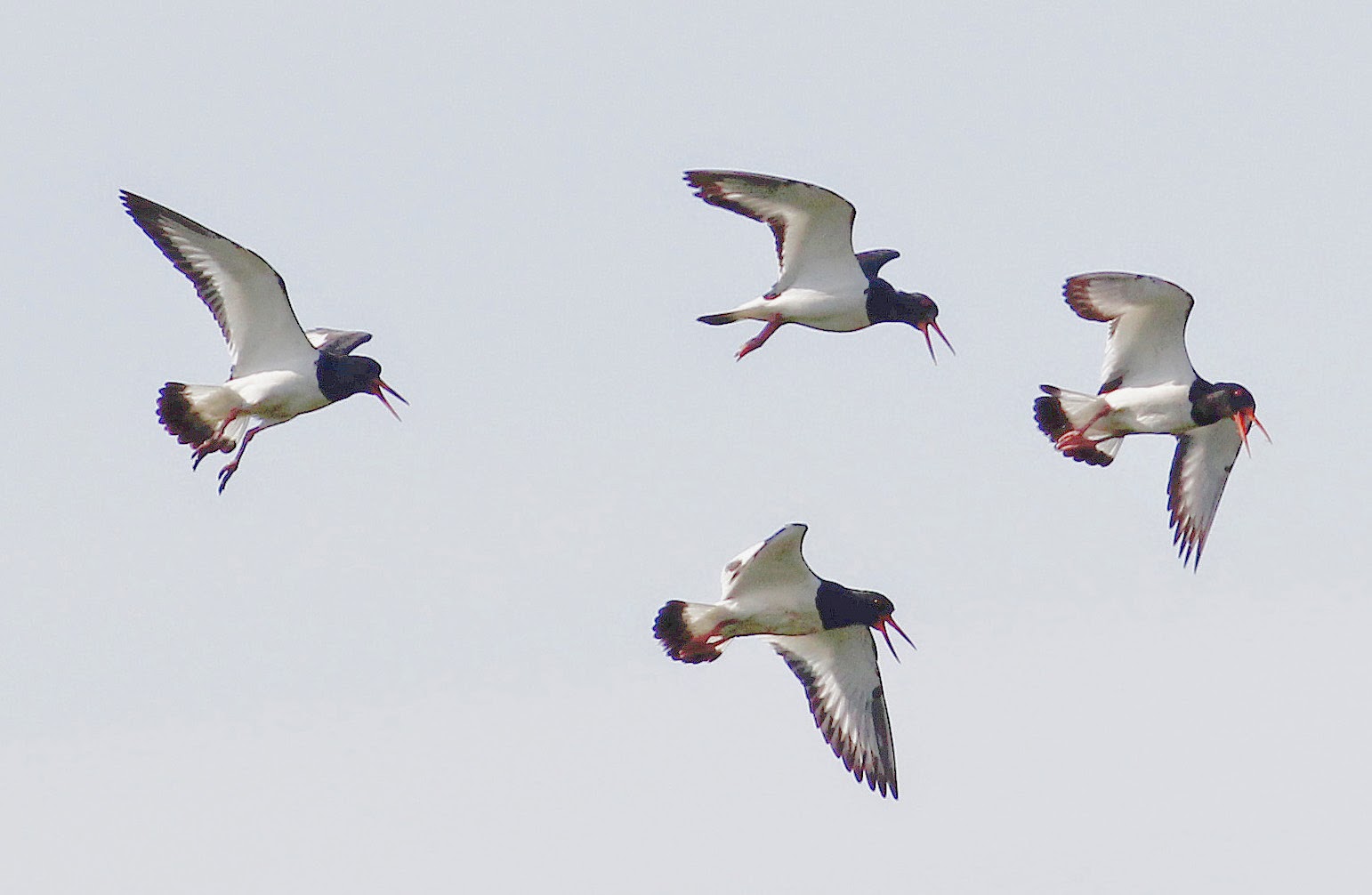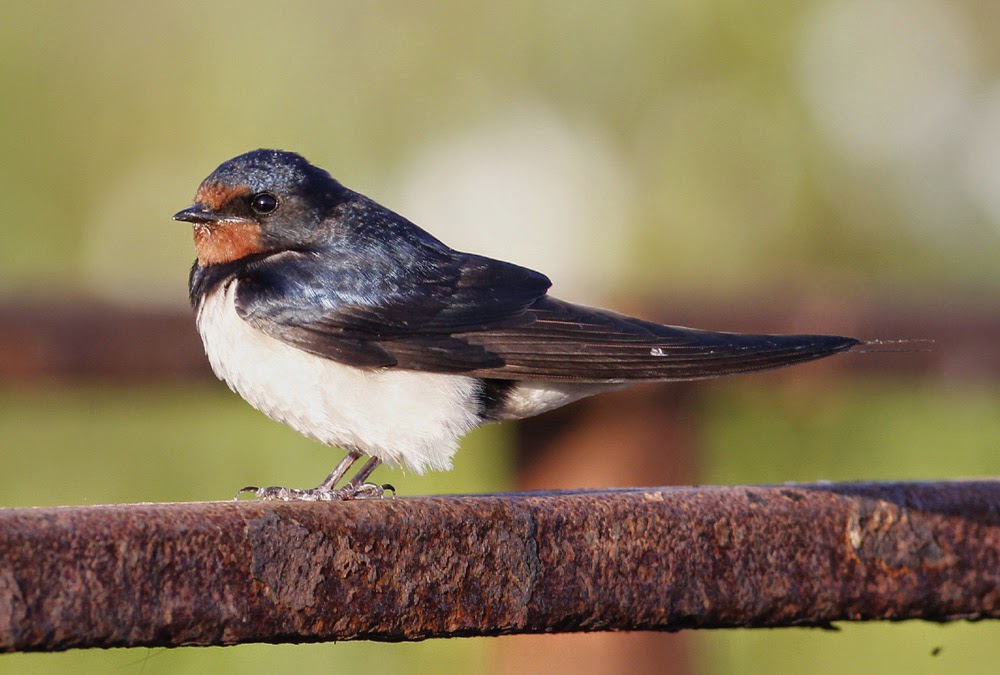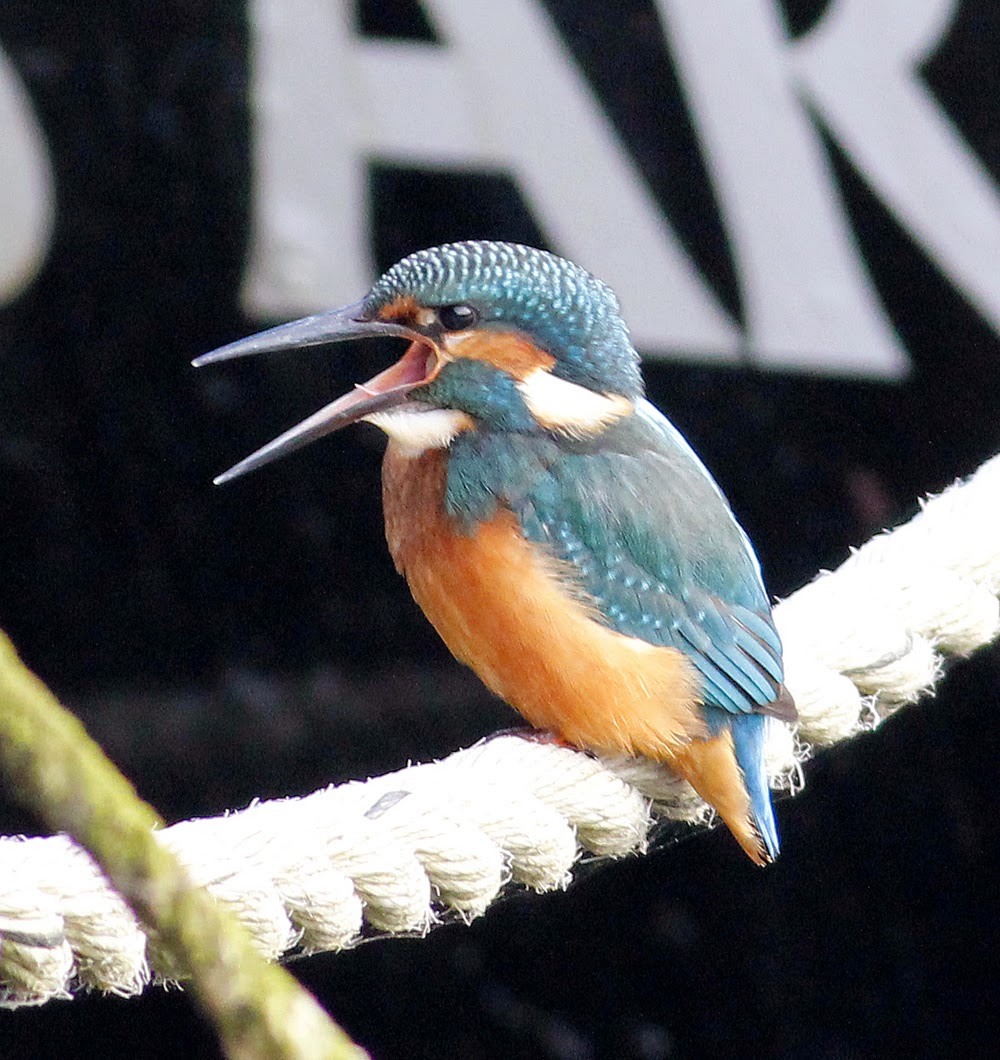The early morning weather was poor, far worse than the forecast, with spells of grey cloud, rain, and worse of all a strong wind. There were however a few interesting sightings and a couple of new photographs to share with blog readers.
Good numbers of Swallows and Sand Martins were on the move soon after 6am. That may have been induced by overnight storms in other parts of the country, the cool, grey, overcast morning or simply by the normal seasonal urges. Mid-July often signals the beginning of Swallow roosts containing locally bred young together with migrants starting their long southerly journeys.
After seeing just handfuls of hirundines in the area of Conder Green and Glasson for several weeks, this morning’s increase in numbers was very noticeable. At Conder Green hirundines could be watched arriving from the north-west and flying directly over the pool before continuing south. I skipped the obligatory look on the pool and motored on up to Glasson Dock where Swallows and Sand Martins were feeding over the yacht basin, all the time flying steadily east and south-east towards Conder Green.
Swallow
It’s hard to put a guesstimate together but perhaps 150 Swallows and 30 Sand Martin. At Glasson it appeared that the Swallows breeding under the road bridge finally have youngsters to show for their efforts with 4 fresh youngsters waiting to be fed while exercising their wings. Those are spots of rain on the youngster’s back, the photo taken at an un-summery ISO800.
Swallow
Swallow
Swallow
On the yacht basin a Great Crested Grebe and 5 Tufted Duck, while on the towpath, 3 Pied Wagtail and 2 Grey Wagtail.
Pied Wagtail
Grey Wagtail
There are token counts from Conder Green as the strong wind put many waders out of sight in the lee of the island and kept passerines low: 120 Redshank, 26 Lapwing, 6 Curlew, 5 Common Sandpiper, 1 Black-tailed Godwit, 2 Little Egret, 2 Pied Wagtail, 2 Stock Dove.
Lapwing
A real surprise was finding an adult Knot on the island. The Knot was some 100 yards from the nearest viewing point and hence the poor photo, but good enough to appreciate where the full title of “Red Knot” originates. The Knot is more strictly a winter-grey shore bird found in huge numbers in Morecambe Bay but rarely on a pool such as the one at Conder Green. So unusual is the record that I captured it for posterity.
Knot (and Lapwing)
There are still 2 Common Terns, a male and a female. I made some drawings of Common Terns via FotoSketcher by converting the original digital images to sketches. The photos were taken in poor light and not good enough to use as blog photographs but they work quite well in depicting the “jizz”, the aerodynamics and flight postures of a Common Tern.
Common Tern
Common Tern
Common Tern
Blog readers from Wednesday will know I set about researching the local place name of Crimbles, part of the Cockerham area.
Crimbles
It seems the name may be a derivative of very old (1300-1500) North of England words such as “cruma” or “crymel” meaning a small piece, a scrap, a small section of land. Both words also had plural forms. This particular part of land is split north and south by the River Cocker and historically subject to high tide floods from the marshes to the north and west. A description of how the land appeared on a daily basis all those years ago would appear to be the explanation as to how the name of “Crimbles” came about.
Like I said, Crimbles is nothing to do with Christmas or food, unless of course the word “crumb” comes into play?
There will be more crumbs of comfort from Another Bird Blog very soon. Book your place now.
Linking today to Anni's Blog and Eileen's Saturday Blog.
Linking today to Anni's Blog and Eileen's Saturday Blog.







































































.jpg)












